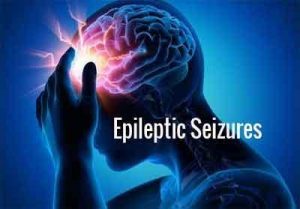- Home
- Editorial
- News
- Practice Guidelines
- Anesthesiology Guidelines
- Cancer Guidelines
- Cardiac Sciences Guidelines
- Critical Care Guidelines
- Dentistry Guidelines
- Dermatology Guidelines
- Diabetes and Endo Guidelines
- Diagnostics Guidelines
- ENT Guidelines
- Featured Practice Guidelines
- Gastroenterology Guidelines
- Geriatrics Guidelines
- Medicine Guidelines
- Nephrology Guidelines
- Neurosciences Guidelines
- Obs and Gynae Guidelines
- Ophthalmology Guidelines
- Orthopaedics Guidelines
- Paediatrics Guidelines
- Psychiatry Guidelines
- Pulmonology Guidelines
- Radiology Guidelines
- Surgery Guidelines
- Urology Guidelines
Lorazepam confirmed as first-line treatment for stopping prolonged seizures in children

Intravenous lorazepam is as effective as intravenous diazepam for stopping children’s tonic-clonic seizures in hospital. Lorazepam also results in fewer breathing problems than diazepam. Giving antiepileptic drugs intravenously generally stops seizures more quickly than giving the drugs buccally (in the cheek), intranasally (in the nose) or rectally. However, this effect can be cancelled out if administering the drug into the veins takes too long.
Two of the 18 included trials were carried out in the UK, but they were all carried out in large children’s hospitals or departments similar to the UK.
The new evidence confirms advice in the existing NICE guideline and also describes the current options regarding the routes and preparations used when it is difficult to secure intravenous access quickly.
Why was this study needed?
About one in 240 children (aged 16 years and under) have a diagnosis of epilepsy in the UK. Tonic-clonic seizures are the type of epileptic seizure that is most easily recognisable. They have two phases: loss of consciousness with the muscles stiffening; followed by jerking of the limbs. Most tonic-clonic seizures last for less than five minutes. If they last longer, it is likely that they won’t stop spontaneously. If they don’t stop, they can lead to serious complications or death. Around 1,000 people die each year from epilepsy in the UK. There is a range of anti-epileptic drugs available to stop the seizures.
This Cochrane review was last updated in 2008. Since then, a number of new randomised controlled trials have been published. This update aimed to evaluate this new evidence, looking if there were any changes to the estimates of effectiveness and safety of the drugs.
What did this study do?
The review included 18 randomised controlled trials involving 2,199 children who attended hospital A&E departments with a tonic-clonic seizure.
The children were aged between one month and 16 years. Some of them were experiencing their first seizure, and some had an established diagnosis of epilepsy. Any and all causes of the seizures were included.
The trials compared a wide range of antiepileptic drugs used as first-line treatment, with a variety of doses and routes of administration. The drugs included benzodiazepines, phenytoin and paraldehyde.
The trials differed in their designs, and the populations of the children included. The risk of bias in trials varied depending on the drug comparison. Fourteen of these trials were published since the 2008 version of the review. These new studies did not add any high-quality evidence that would change clinical practice. For example, the four trials comparing buccal midazolam with rectal diazepam were graded as low to very low evidence, and because of the uncertainty, the authors considered that the new evidence did not support the use of buccal midazolam when intravenous access was difficult.
What did it find?
- Intravenous lorazepam appears to be as effective as intravenous diazepam in stopping acute tonic-clonic seizures, (risk ratio [RR] 1.04, 95% confidence interval [CI] 0.94 to 1.16; three trials, 414 children).
- Compared to other routes, intravenous-administration led to seizures stopping more quickly after a drug was given, but this was off-set by the length of time taken to insert the needle into a vein.
- Few side effects were observed and reported in the trials. Respiratory depression was the most common and was observed in between 0 and 18% of children in trials that reported it. Lorazepam was associated with fewer occurrences of respiratory depression than diazepam (RR 0.72, 95% CI 0.55 to 0.93; three studies, 439 children).
What does current guidance say on this issue?
NICE’s 2012 guideline on the diagnosis and management of the epilepsies includes a section on the treatment for children, young people and adults with ongoing tonic-clonic seizures in hospital. It recommends intravenous lorazepam as first-line treatment, or intravenous diazepam if unavailable.
Buccal midazolam is recommended if administering drugs intravenously isn’t possible straight away. The recommended doses for children are 0.1mg/kg for intravenous lorazepam and 0.5mg/kg for buccal midazolam.
What are the implications?
This update of the Cochrane review confirms current UK guidance and practice. Though the level of evidence was not high for all the comparisons, this is likely to be as good as it gets given how difficult randomised controlled trials are to carry out in this area and the number of drugs and routes available for study.
This article was first published in NIHR Signals.
diazepamEpilepsyepileptic seizureintravenous diazepamlimbsLorazepamNICE guidelineparaldehydephenytoinseizures
Source : NIHRNext Story
NO DATA FOUND

Disclaimer: This site is primarily intended for healthcare professionals. Any content/information on this website does not replace the advice of medical and/or health professionals and should not be construed as medical/diagnostic advice/endorsement or prescription. Use of this site is subject to our terms of use, privacy policy, advertisement policy. © 2020 Minerva Medical Treatment Pvt Ltd